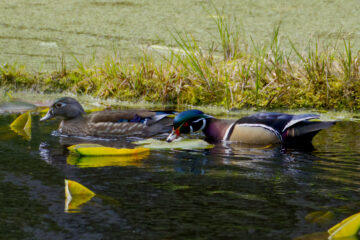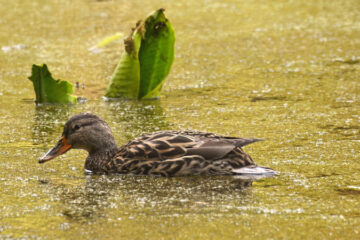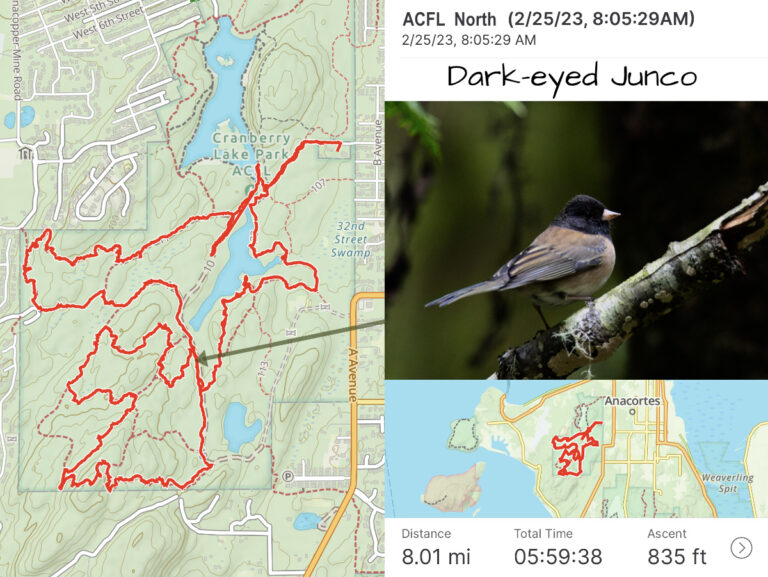
Big Beaver Pond, Little Beaver Pond, Wildlife
Saturday (02.25.2023) I had a great hike searching for more wildlife to photograph in the Anacortes Community Forest Lands. I hiked eight miles and was on-site for close to six hours. Beautiful cold day, and I did find some wildlife. The Trumpeter Swans were out and not stuck in the ice on the pond. I could hear owls and woodpeckers but no visual to capture.
Overall, it was a great day in a beautiful special place.

Dark-eyed Junco
The dark-eyed junco is a small songbird in the sparrow family. It is one of the most common birds in North America and can live in a variety of habitats, including forests, woodlands, meadows, and even backyards.
Dark-eyed juncos are about 5-6 inches long and weigh about 0.67 ounces. They have a grayish-brown back, a white belly, and a black cap. The color of their breast and wings varies depending on the subspecies, with some being gray, brown, or even pink.
Dark-eyed juncos are social birds and often travel in flocks. They are omnivorous and eat a variety of seeds that make up most of their diet. They also eat insects including wasps, butterflies, beetles, moths, caterpillars, flies, and ants. They are also known to eat suet and other birdseed from feeders.
Dark-eyed juncos are cavity nesters and will typically build their nests in a tree or shrub. The female will lay 3-6 eggs, which will hatch after about 12 days. The young birds will fledge from the nest after about 14 days.
Dark-eyed juncos are migratory birds and will travel south for the winter. They will typically return to their breeding grounds in the spring. They are found in the ACFL and the Pacific Northwest year-round.
Dark-eyed juncos are an important part of the ecosystem and help to control insect populations.
They are also popular birds to watch and are attracted to backyard feeders.
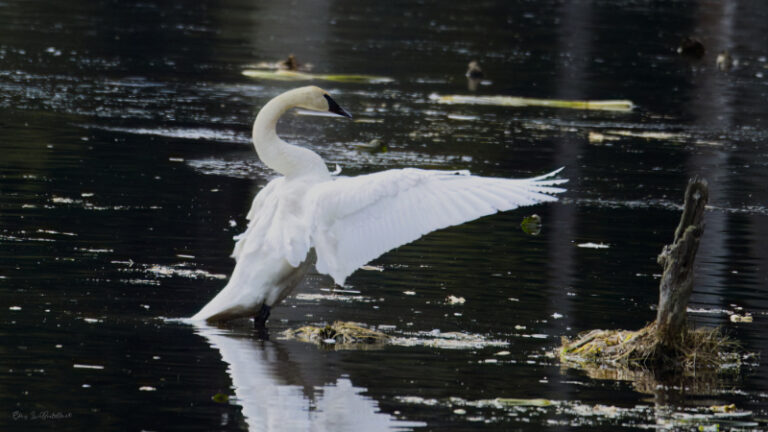
Trumpeter Swan, Female
The resident Trumpeter Swans were close to the north end of Big Beaver Pond and one of the females was preening. I got some great captures of a full-wing stretch of this beautiful swan.
More Images of this Trumpeter Swan
Information about the Trumpeter Swans
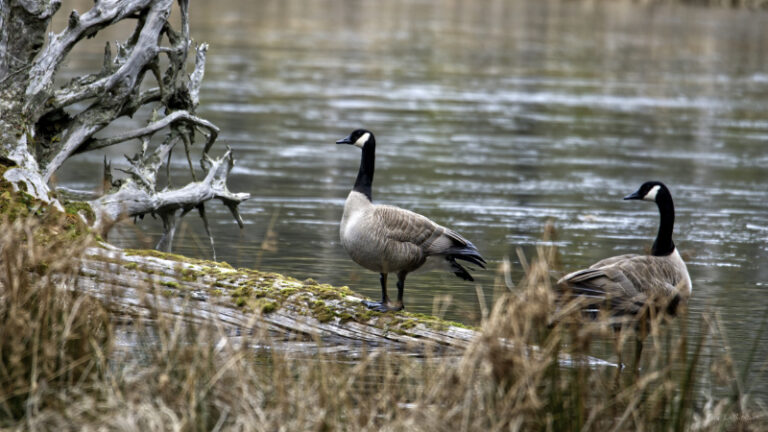
Canadian Geese
There were a number of Canadian Geese in the area checking it out. These two were on the south end of Little Cranberry Lake. There are a number of fantastic places on the south end that provide protection and a peaceful resting place on the lake.

Song Sparrow
The Song Sparrow is found throughout the ACFL along the trails.
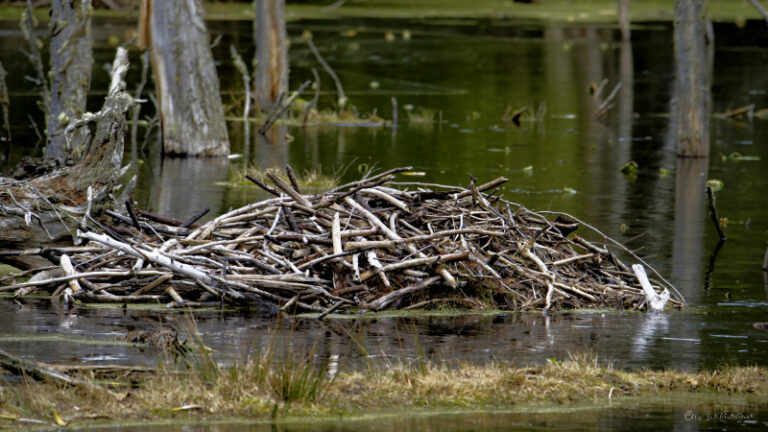
Beaver Lodge
Beavers build their lodges in areas where there is a good supply of water. They typically choose a location that is near a stream or river and build their lodges in lakes and ponds. The beavers begin damming up the stream. The dam is made from sticks, mud, and stones, and it is used to create a pond area. The sound of flowing water makes them busy beavers. The pond provides the beavers with a safe place to build their lodge.
Once the dam is complete, the beavers begin to build their lodge. The lodge is typically built in the middle of the pond, and it is made of sticks and mud. The lodge is usually dome-shaped, and it has an underwater entrance. The beavers use the entrance to enter and exit the lodge, and it is also used to bring food into the lodge.
Beaver lodges provide the beavers with a safe place to live. They are used to store food and used as a nursery for young beavers.
Beaver lodges are an important part of the beaver’s ecosystem, and they help to create a more diverse and healthier environment.
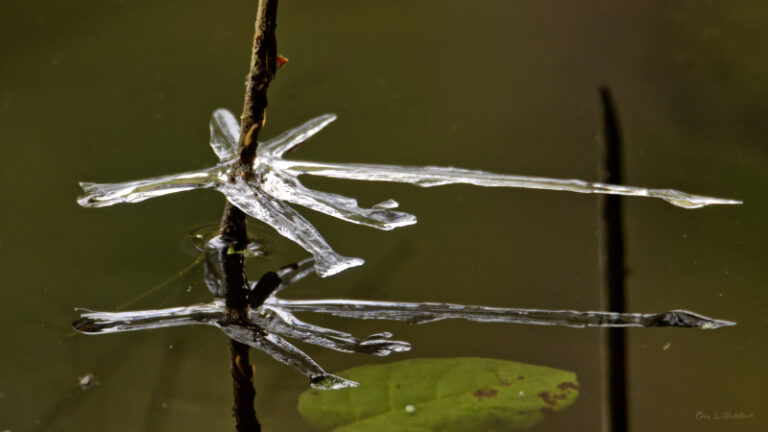
Ice on Ice
I am not sure how this was formed, but it is very interesting. The upper part had frozen and then the water level had gone down leaving it suspended.
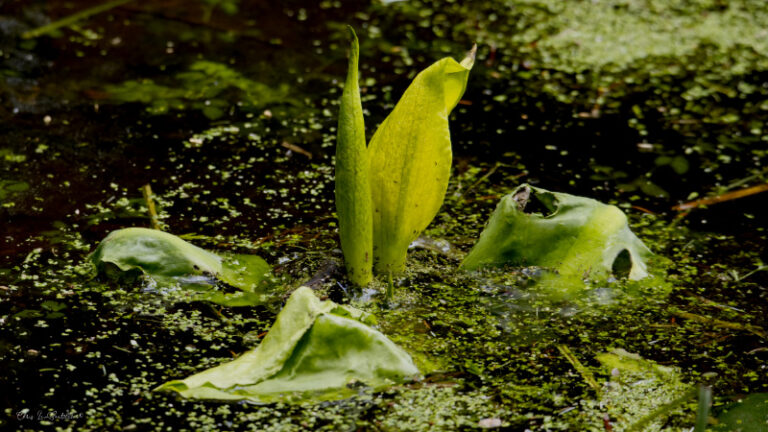
Western Skunk Cabbage
The first sign of spring is the Western Skunk Cabbage. This one was having a tuff time because of the freeze last night.
Interesting Information: Western Skunk Cabbage
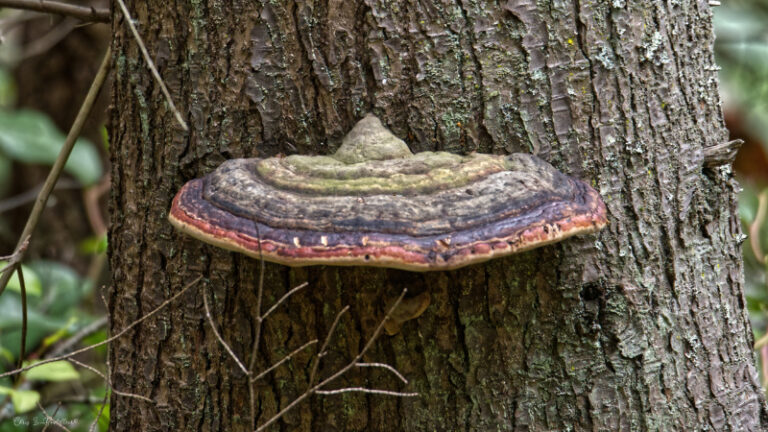


Tree Fungus
Tree fungus grows on trees that are damaged by man, storms, and animals. Once damaged fungus spores can get in and start the growth of the fungus. It can be harmful to trees causing them to rot and die. There are many distinct types of tree fungus, each with its own unique structure.
Above: Northern Red Belt, American Brown Fomitopsis, Ochre Bracket
Little Cranberry Lake, Big Beaver Pond, Anacortes
02.25.2023
All images are © Chris LeBoutillier
You may obtain images here iNaturlist Chris LeBoutillier and use them as required by the Creative Commons License
